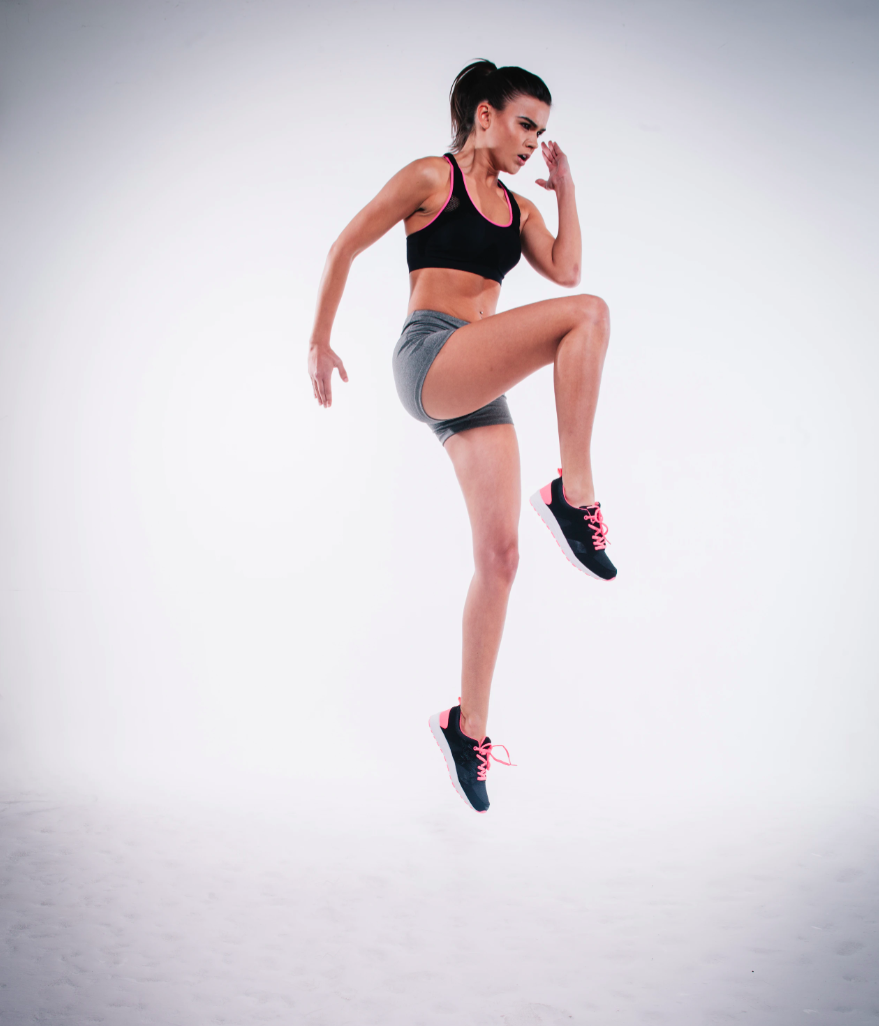Physical Address
304 North Cardinal St.
Dorchester Center, MA 02124
Physical Address
304 North Cardinal St.
Dorchester Center, MA 02124
There’s much more to leaping around than just, well, jumping around. Your power, cardiovascular fitness, overall strength, and full-body coordination can all be improved with plyometric exercise (meaning your ability to move a lot of weight quickly). Plyometric exercises will force you to improve both your physical and mental conditioning because of their explosive character.
Plyometric workouts will improve your balance, focus, and strength as an athlete, whether you’re into functional fitness, weightlifting, or powerlifting. The eight finest plyometric exercises described here either need no equipment or very little equipment, making them ideal for training at home, in your neighborhood park, or that unused area of your club.
A simple split squat is already a great approach to develop major glute, hamstring, and quad strength. Think of it as a lunge with both feet staying in the same place rather than swapping your lead foot with each step. You need to blast up, not merely raise yourself, to get air. More power will be developed as a result of the increased velocity, and this power will be transferred to other lifts like the back squat.
To gain from lateral jumps, you don’t have to be the world’s best jumper. The lateral jump trains your legs and torso to work together as a team to go side-to-side while also increasing your strength (as do all the moves on this list). More body control is produced by this coordination, which translates to nearly all free-weight exercises in the gym. If you want a lower-impact (but still effective) variation of this coordination and strength-building exercise, stay with lateral bounds instead of launching off with both feet simultaneously.
Consider this exercise to be a more concentrated burpee. Squat thrusts are a crucial component of your standard burpee, as it turns out. Burpees can be incorporated into your plyometric practice without a doubt, but the truth is that many people lose their explosiveness the more burpees they perform. It might often be easier and more advantageous to complete more squat thrusts with excellent form than fewer burpees with poor form because there are so many (literally) moving pieces to focus energy on.

Clapping pushups are unquestionably a classic variation on the plyometric pushup.
Slowly descend until your chest is barely off the ground, then jump up. If you’re on your knees, clapping could throw you off balance, so feel free to merely clap vigorously until your hands are off the ground, then slow down and land gently. Make sure you achieve enough height to comfortably clap if you are in a full push-up posture, and then get back to catch yourself as softly as you can.
This one might require some focus to get coordinated. Better balance, hip hinge mechanics, and unilateral leg power are the benefits. Starting with a downward pivot to almost parallel, you’ll end with an upward one-footed jump. Always remember to land gently, and gains will come in abundance.
With soft knees, take a lofty stance and firmly plant your left foot. Repeat after softly landing. Be sure to maintain balance on all sides. Only if you really must avoid the higher-impact landing should you rise to your toes.
As you’ll be leveraging the momentum of your traveling pushup to have your hands land in a different spot with each rep, you’ll need a very low box or step for this exercise. The same muscles that a clapping pushup targets will also be worked by this exercise, but with lateral mobility.
Starting in the standard pushup posture, place your right hand on an elevated surface, such as a step you may use for step-ups or in a group exercise class. Before bursting skyward, dive into the deepest pushup you can muster. Using that momentum, move right such that your right hand is on the mat or level ground and your left hand is placed on the higher surface. Take it one push at a time, walking your hands to switch their places rather than depending solely on explosiveness to accomplish the task if you need to avoid the increased impact of this transition.
For more information you can click: